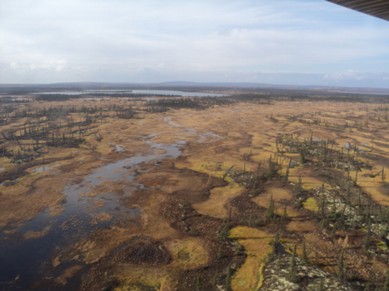Evaluating climate-wildfire feedbacks and impacts on Arctic-boreal ecosystem dynamics across the ABoVE domain to address NASA EPSCoR RapidResponse Research Earth Science
2023-2026 - Dr. Timothy Covino

Climate change is driving rapid and widespread alteration of ecosystems across the Arctic and Boreal zone (ABZ). Of particular concern is the increasing frequency and extent of wildfire in this region, and its consequences for permafrost thaw, watershed hydrology, and biogeochemistry. Wildfire in the ABZ has the potential to release large amounts of carbon by combusting organic material, including vegetation and carbon-rich surface soils, and enhance surface-atmosphere feedbacks that amplify warming (Veraverbeke et al. 2021). Wildfire within ABZ landscapes can not only trigger massive carbon emissions and thus magnify warming globally, but also enhance permafrost thaw and increase the export of inorganic nutrients from terrestrial to aquatic systems (Torre Jorgenson et al. 2013, Ewing et al. 2015). Although considerable work has documented the increasing extent and frequency of wildfire in the ABZ, there is limited analyses of land surface evolution post-fire or assessment of the topology of terrestrial disturbance and alteration of terrestrial-aquatic hydrologic connections within the ABoVE domain. To address this research gap we are working to evaluate: 1) How climate organizes the extent, severity, and frequency of wildfire; and 2) How wildfire characteristics interact with post-wildfire climate to control the trajectory of permafrost thaw, vegetation cover, and ecohydrology in the years to decades post-fire. Addressing these objectives will help improve understanding of interactions and feedbacks between climate-related disturbances and ecosystem processes within the ABZ.
